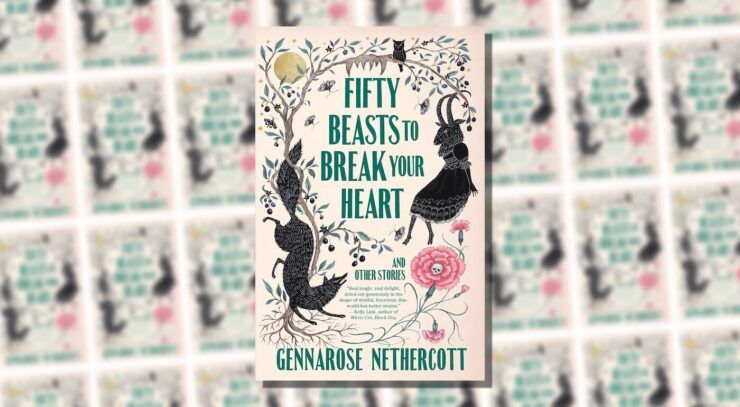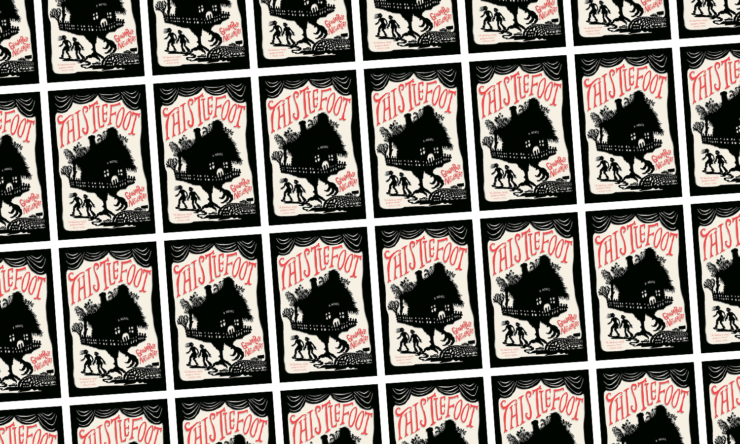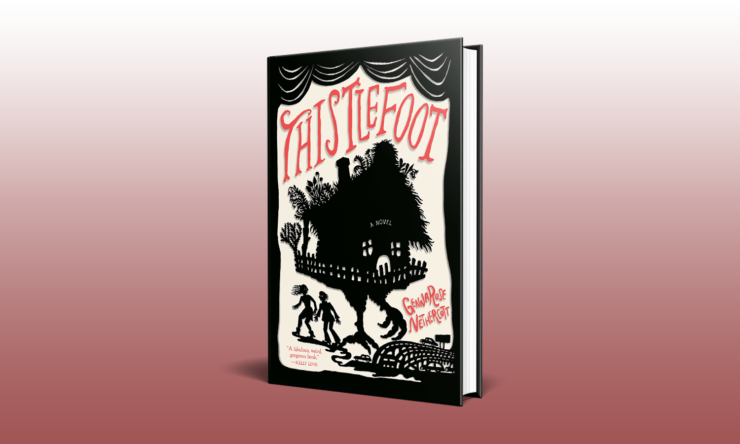We’re thrilled to share an excerpt along with several illustrations from GennaRose Nethercott’s Fifty Beasts to Break Your Heart, a collection of dark fairytales and fractured folklore exploring how our passions can save us or go monstrously wrong—out from Vintage on February 6.
The stories in Fifty Beasts to Break Your Heart are about the abomination that resides within us all. That churning, clawing, ravenous yearning: the hunger to be held, and seen, and known. And the terror, too: to be loved too well, or not enough, or for long enough. To be laid bare before your sweetheart, to their horror. To be recognized as the monstrous thing you are.
Two teenage girls working at a sinister roadside attraction called the Eternal Staircase explore its secrets—and their own doomed summer love. A zombie rooster plays detective in a missing persons case. A woman moves into a new house with her acclaimed artist boyfriend—and finds her body slowly shifting into something specially constructed to accommodate his needs and whims. A pack of middle schoolers turn to the occult to rid themselves of a hated new classmate. And a pair of outcasts, a vampire and a goat woman, find solace in each other, even as the world’s lack of understanding might bring about its own end.
Introduction
We’ll admit— the editors of this bestiary are not zoologists. We did consult a PhD in animal sciences, but she didn’t do any real work. We only hired her to appear more credible to the scientific community. The rest of us are florists. This makes us more qualified to conduct this research than just about anyone else. We spend all day touching beautiful things (both edible and poisonous), so we are experts when it comes to monsters. Monsters and flowers aren’t much different. Sometimes they are hard to tell apart—but a good florist knows what to look for.
Our customers rely on us to ease apologies (tulips; marigold; a single lily), to ensure everlasting affection (baby’s breath, red carnation), to see a beloved into the next life (orchid and rose). We bear a responsibility to convey our clients’ passions with accuracy. But what to do when primrose is not enough? When the greenhouse can no longer contain a client’s longing? Then—a bolder bouquet is needed.
A rose can say a lot, but a Yslani can say more. Why give a hyacinth when you could offer your beloved a Finlir, shaking on its knees?
Through fieldwork, ethnographic study, and somber reflection, we set out to prove that anything could, in the hands of a skilled florist and in a vase of the right size, become a bouquet.
(We have since learned that it is possible to learn too much.)
What follows is a compendium of regional creatures, studied and cataloged in the order in which we encountered them. We conducted this labor over the course of many months, and it cannot be said this time passed without significant setbacks. Still, we believe our report to be of value to any dedicated craftsman of the floral arts, as well as to the occasional interested outsider.
Do not be thrown by the many rumors in this text. There is much we cannot say for sure—unsubstantiated facts. What is true will not cleanly be separated from superstition. The truth is none of your business.
If you are not a florist but stubborn enough to read this anyway, here’s a test:
What is your favorite flower?
If you answered with anything other than a creature listed in this book, you’d be smart to revise your answer before they find out. The beasts here are a vain lot.
Here are a few more test questions:
What is the most hideous thing you ever nurtured?
What shape is a phantom limb?
What wine pairs best with the most lonesome meal?
What is enough?
Again, if you did not answer with one of the beasts in this text, you are only putting yourself at risk. We’re telling you this as friends. If this document acts as anything, let it be a map of hunger. Let it be flint. Let it be a warning.
Signed,
Dr. Larkspur, researcher
Dr. Ghost Pipe, researcher
Dr. Phlox, floricultural illustrator

Getly
The Getly sings, and its prey listens. Oh, what a sound, how riotous and sweet. The prey’s heart is a rattle seized to shake. Don’t stop singing, begs the prey, leaning closer to the Getly’s open mouth. Don’t stop singing. The Getly obliges, and the prey climbs into the Getly’s throat. The Getly sings until the prey has forgotten its own name. It sings of highways and shipyards, of hotel rooms and riverbeds. It keeps singing until the prey has slipped into its belly and dissolved, no longer a living thing but merely food: fuel for a song.
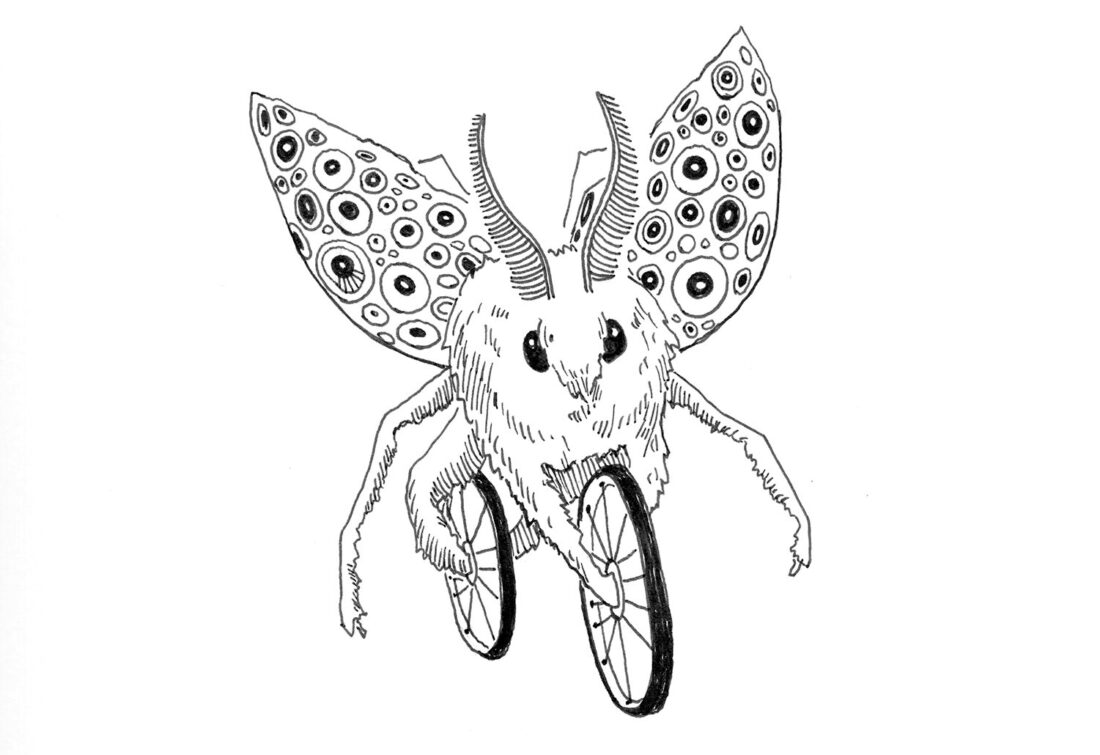
Spotted Lepidome
Imagine a moth with pale, powdered wings. No, that’s not quite right. Here: imagine a bicycle. Now adjust your image of the moth to match the size of the bicycle. That’s closer.
Spotted Lepidome do not have a larval state but, rather, begin life fully grown. Not unlike a chrysalis, the Lepidome egg is outfitted with a brassy zipper, which grins open in the act of hatching.
Larkspur and Ghost Pipe’s first date was over a hatching Lepidome. The magic of each great wing emerging from almost-death—it was romantic. After the Lepidome flapped away, the editors went home together under the auspices of filing this report. They did not file this report. Thus, Phlox’s illustration was drawn with less than complete information. The beast does not actually have wheels—that was a misinterpretation of wording on Phlox’s part. It’s okay. He did his best with what he had.
The Spotted Lepidome is named for an array of magenta eyes dotting its wings. The marks range between two inches and one foot in diameter. On a typical moth, similar eyelike markings serve to confuse predators into believing they are being watched. In the case of the Spotted Lepidome, however, these marks can actually see. Though it has not been confirmed, we theorize that Lepidome eye spots can see seventeen colors beyond those perceived by the human eye. They may also be able to see the future, sound waves, and the dead.
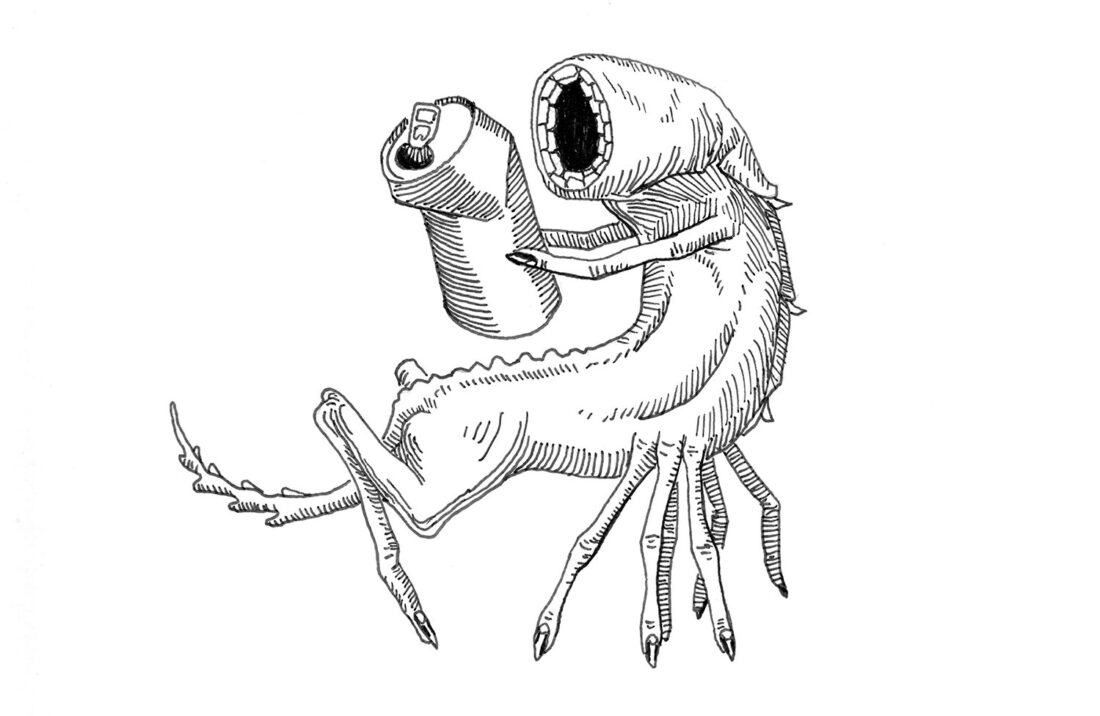
Prem
Anyone will tell you—Prems are a real nuisance. They turned that brand-new pair of shears to rust overnight. They drank the shine from the watering can, crumbling it in five minutes flat. Same with the steering column of Ghost Pipe’s car, which fell straight through his Volvo’s floor last summer while he was making out with Larkspur in the back seat. Prems have a thirst for good metal. They suck the glint out of it, leaving behind oxidation to drip in red flakes. A Prem’s mouth is round and opalescent, like a moon with a hole in it. The best way to keep them out of the house is to leave scrap metal in a pile in the yard. That will satiate them enough to leave the jewelry boxes alone.
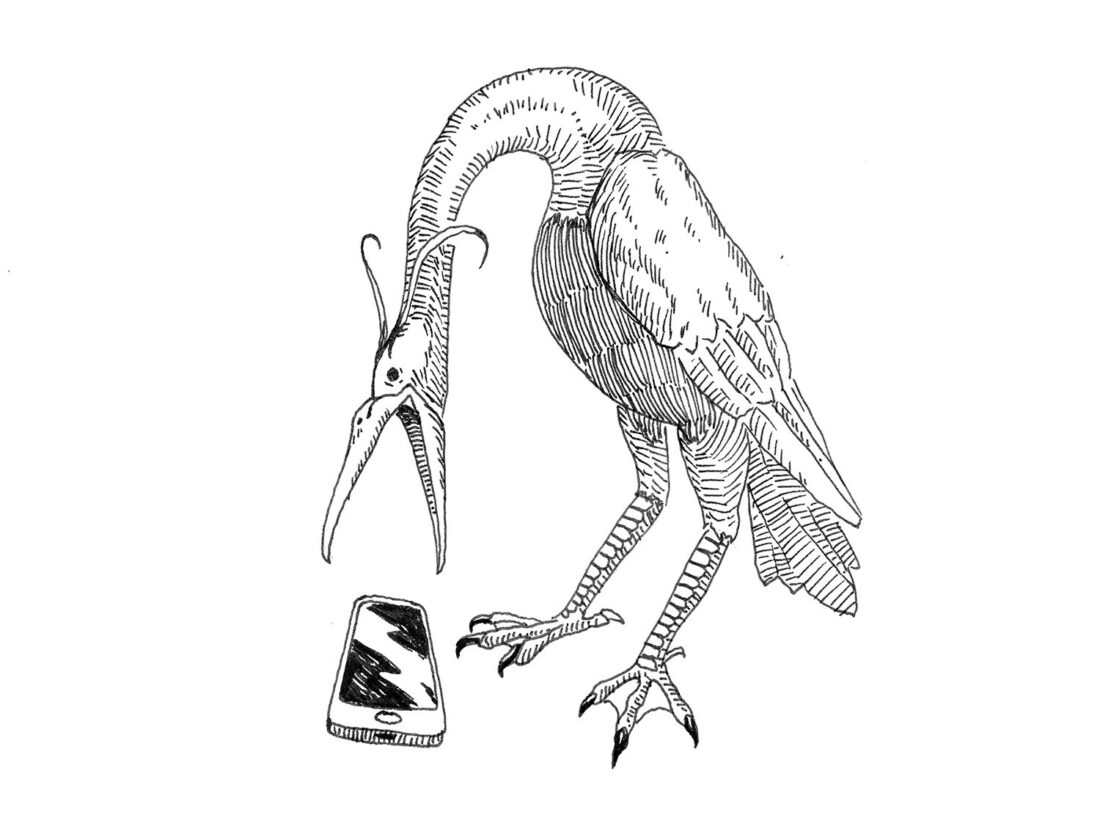
Blue-Bellied Ib
Ever since Ibs figured out how to use the phone, it’s been prank calls day and night. They’re terrible jokesters because Blue-Bellied Ibs cannot lie. Instead, they’ll ring you to tell it to you straight:
The recycling is all going to the landfill. If you’d kept practicing the fiddle, you’d be good by now instead of dreadful. That comb-over isn’t fooling anyone. One day, you too will die.
Remember how you lay together, in the back of the flower shop, the air drowned in gardenia? He’ll never hold you again.
You could have loved her—you simply chose not to.
They’re purebred soothsayers. It’s okay to hate that. It’s okay to shoot the messenger. Rotisserie Ib is a good, filling meal, and if you eat it, you won’t have to listen to the truth anymore, ever again. Easy.
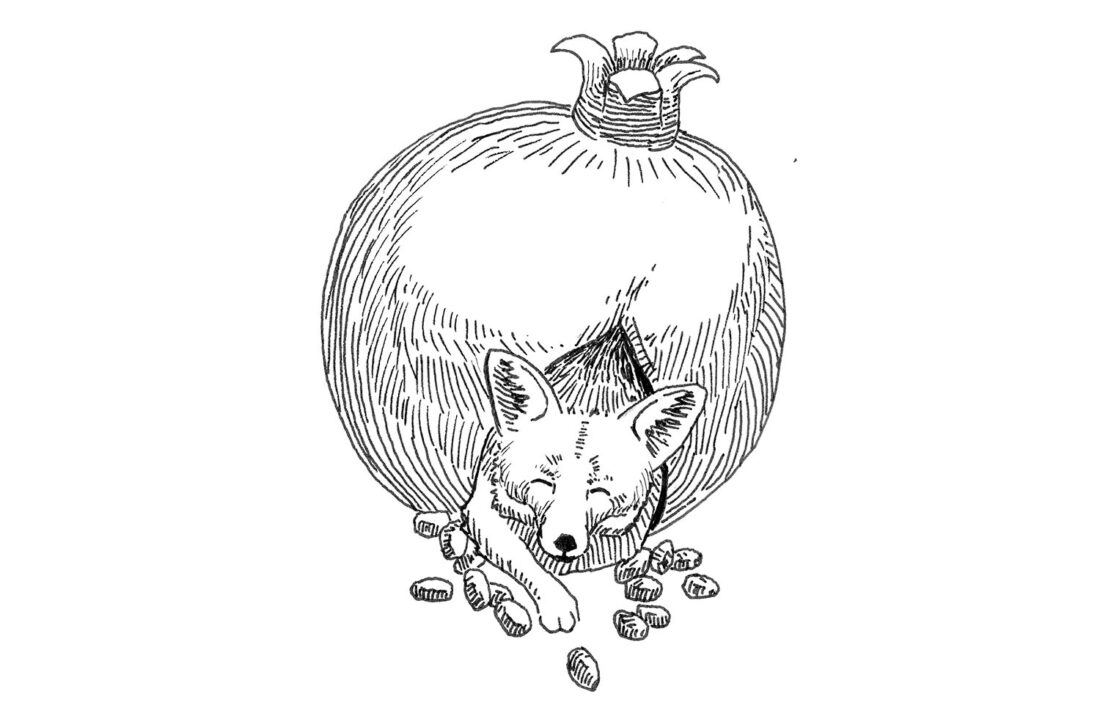
Seed Vulpes
Most foxes are birthed hot and mammalian. The Seed Vulpes is not most foxes. It is born from a splitting pomegranate. Once free of this womb, it carries the fruit beneath its tongue—little blood drops sweet to the taste. It has been known to leave single seeds on the closed eyes of women abandoned by lovers. When the women wake, they find the Seed Vulpes at the foot of the bed, whistling. It whistles all the tunes the women’s lovers once hummed over the kitchen stove and recites their favorite comical vanity plates. When the women reach out to pet the Seed Vulpes, it grins, and the women decide it is better left untouched.
If a woman chooses to eat the pomegranate seeds left upon her eyes (as Larkspur may or may not have done), it can serve as an antidote to the sorrow the lover left behind. The seeds will take root inside the woman. They will sprout and tangle, will grow and grow and will not stop growing. Branches will extend into her fingertips and her knees, bloom into her throat, filling the emptiness her beloved’s abandonment gouged out. No more hollows. No more need. Only a sapling, thorny with claws, widening by the day.
Excerpted from Fifty Beasts to Break Your Heart, copyright © 2024 by GennaRose Nethercott.
Buy the Book
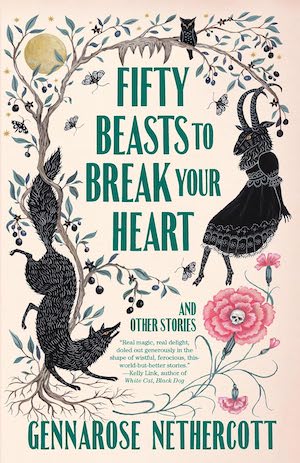

Fifty Beasts to Break Your Heart











